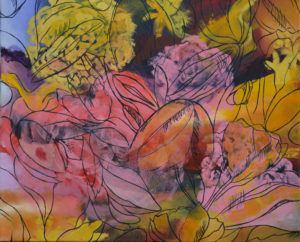 It has been fascinating to study art history highlights and observe the role of the artist change dramatically in society and also to further examine the definition of art perceived by the people of the time.
It has been fascinating to study art history highlights and observe the role of the artist change dramatically in society and also to further examine the definition of art perceived by the people of the time.
“Art in the middle ages was ‘art for God’s sake’; art in the Renaissance was ‘art for man’s sake’; art in the 19th century was ‘art for art’s sake’; now art in the 20th century is ‘no art, for God’s sake.”
-G. K. Chesterton
There has always been a relationship between the patron of art and the artist. This relationship waxes and wanes with time as art served different purposes in the human experience and human expression. In the Middle Ages art was made by artists who mostly remained anonymous. The type of art they made in general supported the religion of the times: building of churches, icons, images of God, disciples, Jesus, bibles and illustrated manuscripts. “Art was made for God”. The relationship between state and church was co-mingled. The power and money flowed through the church. Art patrons frequently bought art to insure their afterlife in eternity. Art was used to illustrate and influence the illiterate masses by explaining beliefs, religion, morals and cultural standards.
During the Renaissance, the artists and their art, although still strongly driven by patrons of both church and art, became more independent from the church, as the church became slowly more separate from the state and its powers. Art increasingly illustrated everyday life, life of the powerful, and the church dogma and beliefs. As artists became freer in society to explore the roles of art, their own beliefs and had more independent patrons, art blossomed away for religious themes exponentially. Material science of art materials and science in general, played a role in expanding the self-imposed limits of what is art and what art means to the human experience. “Art was made for man”, not the church, to begin to explain man’s existence. Science being used to explain the history of the universe opposed or challenged the teachings of the church in many ways. Art expressed the divergence and focused more on man itself than church (God).
During the 19th Century, art further developed away from the church as subject or common patronage. “Art was made for art’s sake.” Romanticism, Realism, Impressionism and Symbolism all served an artistic purpose and expression pushing the boundaries of art at the time. Expressions of man being free, elaborate sense of light and color, advancement of science were all reflected in art of the time. Photography slowly replaced a role art had played in the past. As a result it freed up visual art for the sake of art; not to serve the role of documenting life of the times.
During the 20th Century, one might say “No Art was made for God’s sake.” Art moved rapidly through many transitions accelerated by psychology, philosophy and science – all of which were growing at a rapid pace in parallel to art. Secondly, World War I and II had everlasting influences on art and artists, questioning man’s own self destruction and lack of morals resulting in heinous attacks on other humans. Cubism, Modernism, Post Modernism, Pop Art, Minimalism, Abstract, Performance and Conceptual art increasingly move away from representation to ideas of art and human existence. Today in twenty-first century art there is no link to the church unless an artist or their patron individually decides to pursue such subject matter. It’s an individual artist’s choice and in the majority in the West, the path not chosen.
